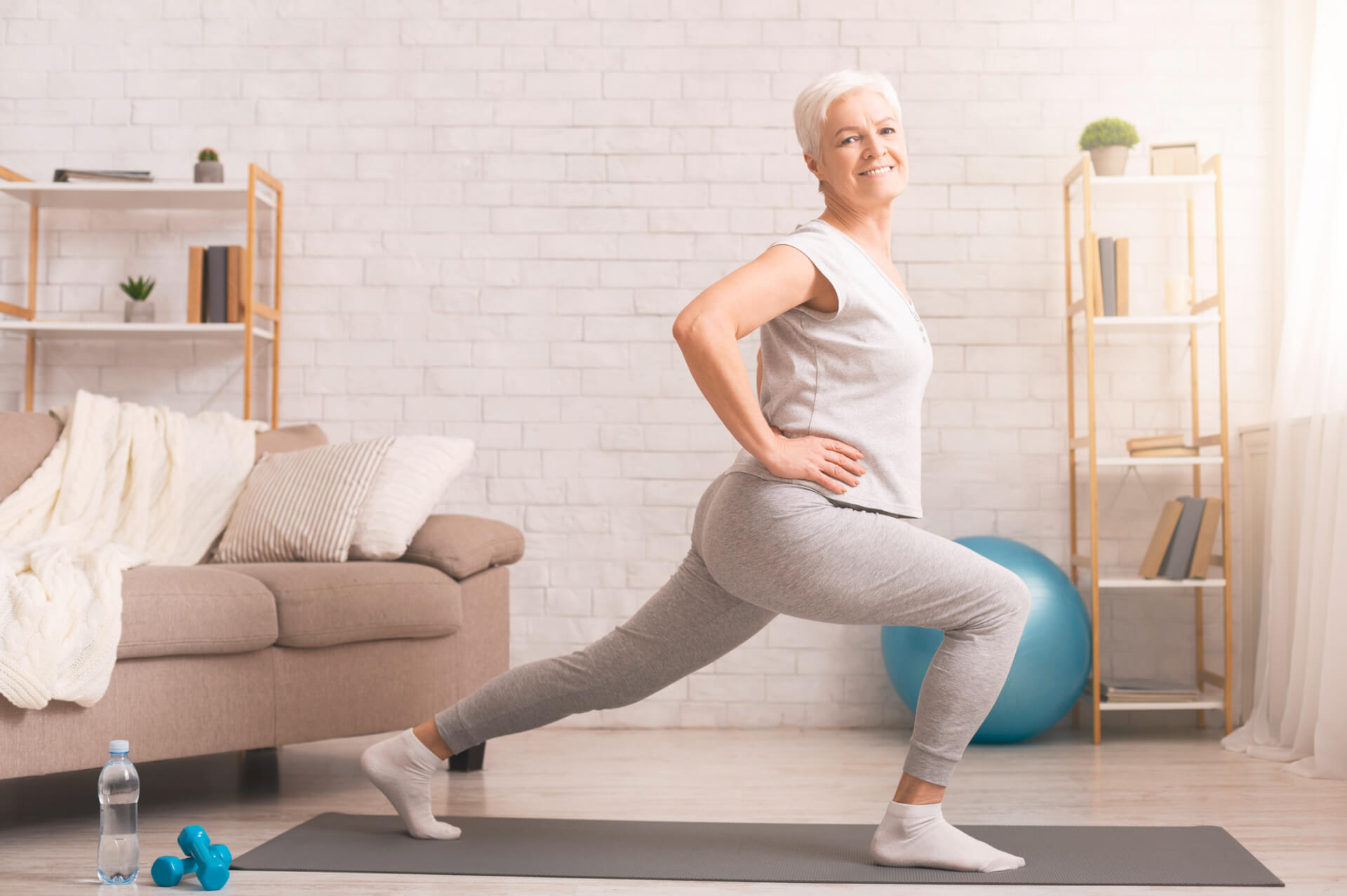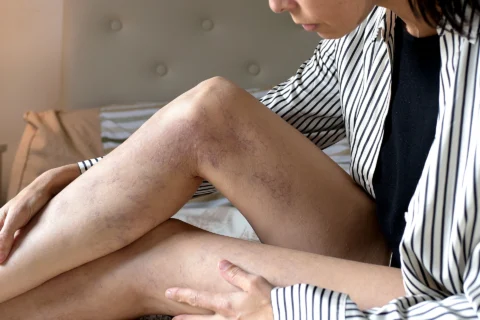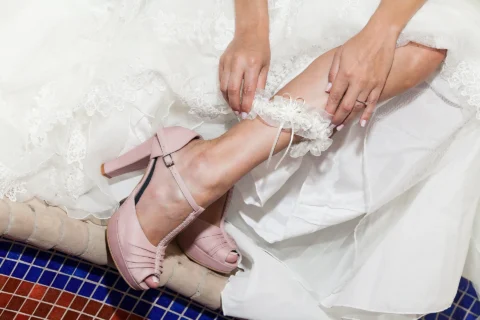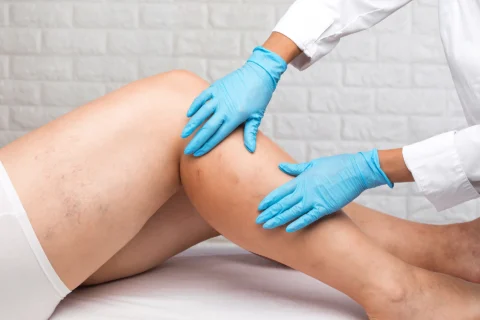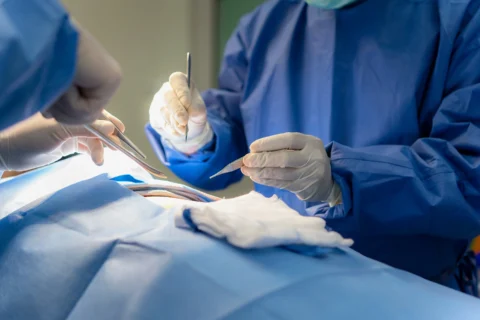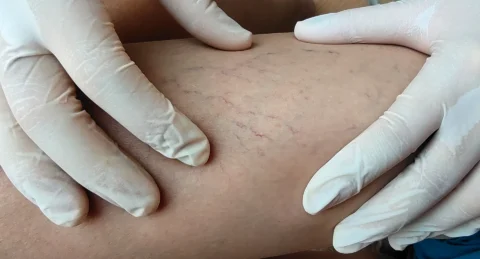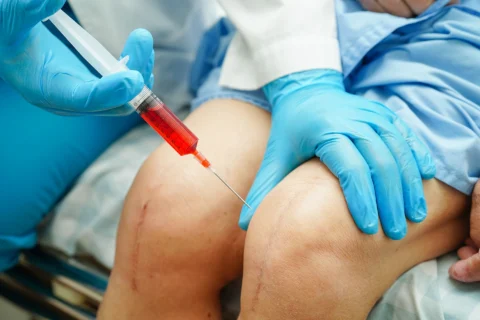When the blood that’s supposed to reach the heart flows backward or builds up in the blood vessel, it can result in visible veins like spider vein and varicose vein. But unlike the small web-like visible veins that lie just beneath the skin surface, the superficial varicose vein is particularly bothersome because of its large bulging vein appearance and the pain symptoms that come with it.
So how can you manage the varicose veins at home? Varicose vein pain can be unbearable and interfere with your daily activities. Fortunately, there are simple varicose veins treatment that can help provide comfort at home: exercising, eating a proper and healthy diet, wearing compression stockings, and natural treatment with herbs and essential oils. There are also medical treatment options that you may look into when your varicose veins get worse.
These Are the Varicose Veins Home Treatments You Can Try
Varicose veins are easily noticeable with their blue or purple enlarged vein appearance. However, because of the blood pressure that is created in the veins due to the accumulation of blood, this superficial vein problem may also be accompanied by some leg swelling, muscle aches and cramps, heaviness, and throbbing pain.
You can prevent varicose veins and improve their symptoms by maintaining proper blood circulation and ensuring that you have good vein health. Here are some helpful care and management tips that can improve your varicose vein issues:
Strengthen muscles and veins with regular exercise
People who have sedentary lifestyles and lack any kind of physical activity can be at more risk for varicose veins since blood may easily collect inside the veins when you’re not moving. Low-impact exercises such as walking, cycling, swimming, and yoga can help promote better blood flow throughout your leg veins. You may also do routines like leg lifts, bicycle kicks, calf raises, and lunges to tone and improve your leg muscles.
Diet changes
Consuming a lot of salty and processed foods may encourage varicose vein development. This is because foods with high sodium content can increase your water intake, resulting in high fluid retention which can add pressure to the veins. Incorporating foods that are rich in potassium such as potatoes, almond nuts, and green leafy vegetables can help lower the risk for water retention.
People with varicose veins are also advised to eat more bioflavonoids or those high in rutin since they can protect against blood clot formation, inflammation, and can strengthen capillary walls to promote healthy veins and blood circulation. Some of the natural sources of rutin include fruits like apples, grapes, berries, and vegetables like spinach, kale, and tomatoes.
Wear compression stockings
Compression stockings apply pressure to the affected vein and help restore the movement of the blood from the legs to the heart. If you have a job that requires you to stand or sit all day, your vein doctor may advise using compression socks to minimize swelling, inflammation, and avoid muscle strain by assuring that blood continues to flow. Compression hosieries can be bought in most pharmacies and medical stores.
Herbal remedies
Many plants and herbs can work as a natural remedy for varicose vein therapy since they have healing and anti-inflammatory properties and benefits for promoting blood circulation. Some of the herbal treatments that you can try are:
- Horse chestnut extract – Horse chestnut is a popular alternative supplement that can help minimize inflammation and improve blood flow to prevent venous diseases. They are also rich in flavonoids which promote vein health. There are available topical horse chestnut creams for varicose veins.
- Witch hazel – Witch hazel is a small plant that has many benefits for various skin and vein conditions. They come in topical or gel forms where you’ll apply them on the varicose veins using a cloth, or you can mix distilled witch hazel in a tub with warm water and soak and rest your legs in the solution.
- Grape seed extract – Grape seed is another natural remedy that contains antioxidants and can strengthen blood vessels to prevent poor circulation. It is available in supplementary tablet and capsule forms, or liquid extracts which you can use to gently massage in the area of the damaged vein.
- Butcher’s broom – Butcher’s broom comes from a small shrub that is abundant in Europe and North Africa. It is known to help treat vascular conditions by encouraging proper circulation and improving vein health. It’s usually taken orally and you can buy tablets and capsules in most natural food and drug stores.
- Centella asiatica – Centella asiatica, also known as Gotu kola, has many health benefits and it is believed to be useful for enhancing blood flow in the veins. Likewise, it can stimulate the production of collagen which is a protein that helps strengthen the vein wall. This is available in dietary tablets, capsules, and extracts.
Application of essential oils
Essential oils are known for their therapeutic properties and calming effects on the mind and body. Vein treatment using essential oils may help provide temporary pain relief from its symptoms and improve blood circulation. The common oils that are believed to be effective for varicose veins are lavender oil, cypress oil, rosemary oil, chamomile oil, helichrysum oil, and geranium oil.
Apple cider vinegar
Apple cider vinegar is a readily available natural remedy at home. Because of its anti-inflammatory benefits, it is thought to be helpful for relieving swelling and inflammation of varicose veins. When applying apple cider vinegar to the affected area, it’s recommended that you also elevate your legs to enhance its effects and allow the blood to flow smoothly from the lower leg to the heart.
Garlic and lemons
You can also create your own solution for varicose veins using garlic and lemons. Garlic works wonders for your blood circulation while lemons are rich in vitamin C which helps enrich your skin and strengthens blood vessels to keep smaller varicose veins from getting worse. Making your own garlic and lemon ointment is easy:
- Peel and chop garlic cloves then extract lemon juice
- Mix the ingredients in a jar with olive oil and allow them to sit in a warm place for a few hours.
- Take out the mixture and gently apply them to the affected veins.
Cayenne pepper
Another natural ingredient that is rich in vitamin C and flavonoids is cayenne pepper. It is said to be helpful for treating and easing varicose veins symptoms because it can stimulate blood circulation and protect against blood clots. For DIY cayenne pepper ointment, you’ll need beeswax and olive oil:
- Put the cayenne powder and olive oil on a pan and place them on a stove with low heat.
- Slowly mix using a wooden spoon until you get a smooth mixture.
- Turn off the heat and let it cool down for a few minutes.
- Place the mixture in an airtight container. You may apply this ointment at least twice a day to relieve the symptoms of varicose veins.
When To See A Specialist For Varicose Vein Disease
Home treatments can only do so much to provide temporary comfort from the pain of varicose veins. Severe varicose veins and excruciating pain in the veins may be a sign of serious complications such as deep vein thrombosis, venous ulcer, and chronic venous insufficiency. In these cases, the best solution is to consult with a vein specialist and get the right treatment for vein removal.
- Laser treatment – Laser therapy for varicose veins works by using heat from laser energy to close the damaged vein. Over time, the treated vein will disappear and you will see improvement in the appearance of your varicose veins.
- Endovenous ablation – An endovenous laser ablation is a catheter-assisted procedure where the laser energy is delivered using a small tube that is inserted into the veins. The heat will cause scar tissue to form so the veins will shut off.
- Radiofrequency ablation – Radiofrequency vein treatment is also performed with a small catheter but the heat used comes from radiofrequency waves. This, along with endovenous ablation, is usually the preferred approach for treating a larger varicose vein.
- Sclerotherapy – In this treatment, your doctor will give injections that contain a chemical solution or foam to close a vein. It’s possible to have more than one sclerotherapy session depending on the extent of your varicose veins.
Learn more: When to Worry About Varicose Veins?
Find The Best Varicose Vein Treatment At Vein Center Doctor
Varicose veins can be more than just a cosmetic problem. While home remedies can provide quick pain relief, varicose vein procedures are still the ideal course of treatment to eliminate them permanently.
Here at Vein Center Doctor, you can find the right vein treatment that you need for your vein condition. We’re a full-service vein care facility and we specialize in offering safe and effective minimally-invasive treatments for your varicose veins, spider veins, and other vascular conditions. Contact us today and schedule your appointment to reclaim your vein-free skin.

